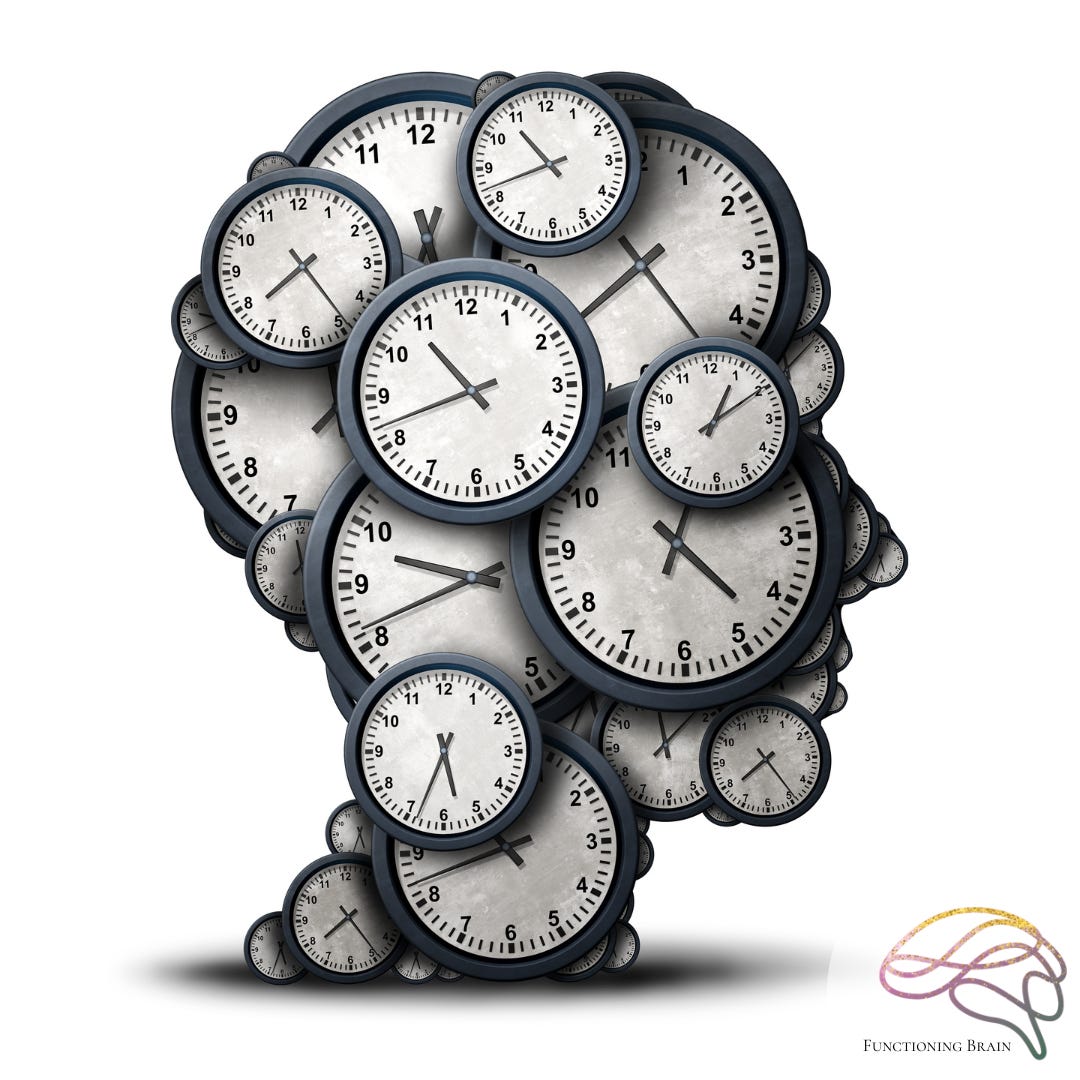Mindful Monday: How Brains Tell Time
Time awareness research is considered a “fundamental mystery” in neuroscience. This week I’m spotlighting two studies that are quite groundbreaking and reveal a lot about how our brains actually process time—and what that means for kids learning to plan, pace, and persist.
A friendly [repeat] reminder: research is a guide, not a rulebook. For every study pointing one way, you can usually find three pointing another.
That’s not a flaw—it’s how science grows.
It’s why we use it as a compass, not a cage.
Your child wasn’t in these studies. Their brain is uniquely theirs—beautifully, wonderfully different. If what we see here matches what you see in your child, great—we’ve got more language and strategies to lean on. If not, we tuck it away as background knowledge and keep getting curious about their one-of-a-kind brain.
1. Counting Experiences, Not Minutes
Summary: A study published in Current Biology looked at rats’ anterior cingulate cortex (ACC) and found something really interesting: their brains weren’t keeping “clock time.” Instead, neural activity drifted in a way that tracked how many experiences had happened. Rats that worked faster showed faster drift; slower ones drifted more slowly. In other words, their brains seemed to measure time by what they had done, not by seconds ticking by.
Why it matters for the Functioning Brain:
Kids’ sense of time grows more from lived, repeated experiences.
Repeated routines help their brains build an “event-based” sense of time.
Steady pacing matters—too fast, and the brain rushes through; too slow, and it loses calibration.
My Notes:
This is one of the reasons I recommend pairing repeated activities with visible time cues. The brain counts experiences, while the eye learns to link them to moving time.
2. Replay in the Brain: Building Timelines
Summary: A Nature study recording human hippocampus and entorhinal cortex activity showed that our brains do more than remember what happened—they also organize when it happened. Neurons fired in sequences that reflected the structure of events, and later “replayed” them to prepare for what was likely to come next.
Why it matters for the Functioning Brain:
The hippocampal system helps kids organize experiences into a mental timeline.
When kids practice predicting how long something will take, they’re literally training the brain’s timeline system.
Replay consolidates those lessons—so the next time they face a similar task, their brain already has a framework to then work from.
My Notes:
Narration is powerful here. Have your child retell the order of steps they just did (“First I brushed, then flossed, then rinsed”) strengthens their internal time structure. The brain practices both the sequence and the sense of duration.
Putting It Together: Repeat + Replay = Time Awareness
When we combine these two insights, we get a simple but powerful recipe:
Repeat structured activities. Brains count those experiences, so consistent routines help calibrate their sense of time.
Make time visible. Giving kids a visual anchor helps them match it to their “event counts.”
Estimate. Prediction–feedback loops give the hippocampus timelines to replay.
Narrate. Retelling steps cements the when and how long into memory.
Together, these help kids not just see time, but feel it.
And feeling time is the foundation of planning.
Bottom Line
Repetition isn’t busywork— and it’s not just for “those Type A” parents. It’s how the brain tunes its internal clock.
Each repeated cycle, each glance at their visual anchors, each narrated step gives your child’s brain another piece of the puzzle.
Over time, they start to sense ten minutes, predict how long tasks will take, and plan with a little more ease.
That’s the quiet magic of brains learning time—one experience, one replay, one day at a time.
These small moments stack up into lifelong tools for independence and confidence.
Warmly,
Tara Roehl, MS, CCC-SLP 💛
P.S. Paid subscribers—your bonus resources are coming! 💛
This week, I’ve put together resources to build these visual anchors to increase time awareness. Think of it as a little toolkit for making time visible, predictable, and just a touch more fun. Have those clocks ready!
In the meantime, don’t miss last Tuesday and Friday’s posts!



